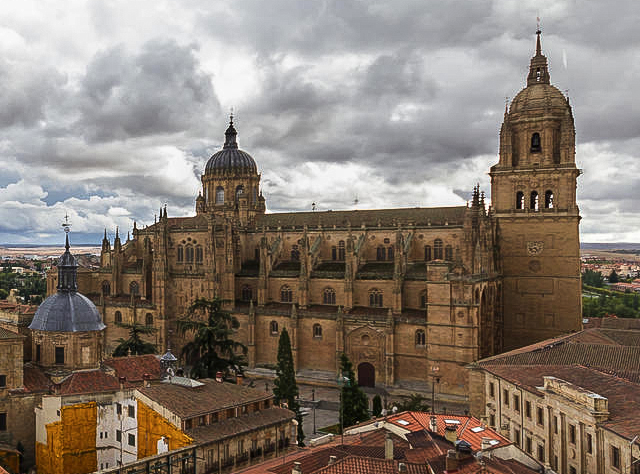The Cathedral of the Assumption of the Virgin, popularly called the New Cathedral, is, together with the Old Cathedral, one of the two cathedrals in the city of Salamanca, in Spain.
It is the seat of the diocese of Salamanca. It was built between the 16th and 18th centuries mixing late Gothic, Renaissance and Baroque styles. It is the second largest cathedral in Spain in dimensions and its bell tower, 110 meters high, is also one of the tallest in Spain.
The new cathedral was built between 1513 and 1733, preserving the old one. At first they thought of demolishing it, although the criteria of keeping it open to worship was imposed while the construction of the new one was carried out. When the works were finished in the 18th century, they reconsidered the idea of destroying it and for that reason it is preserved today.
The cathedral is, along with that of Segovia, one of the last two Gothic-style cathedrals to be built in Spain. The new cathedral was built, continuing with the late Gothic of its origins, between the sixteenth and eighteenth centuries, although at the end of the sixteenth the head, designed with a Gothic ambulatory, was changed to a flat one and during the eighteenth two elements were added that they broke in a striking way with the predominant style of the temple: a baroque dome over the transept and the upper sections of the bell tower. This bell tower is 93 meters high.
The interior of the cathedral is very similar to that of the Seville cathedral.


Leave A Comment